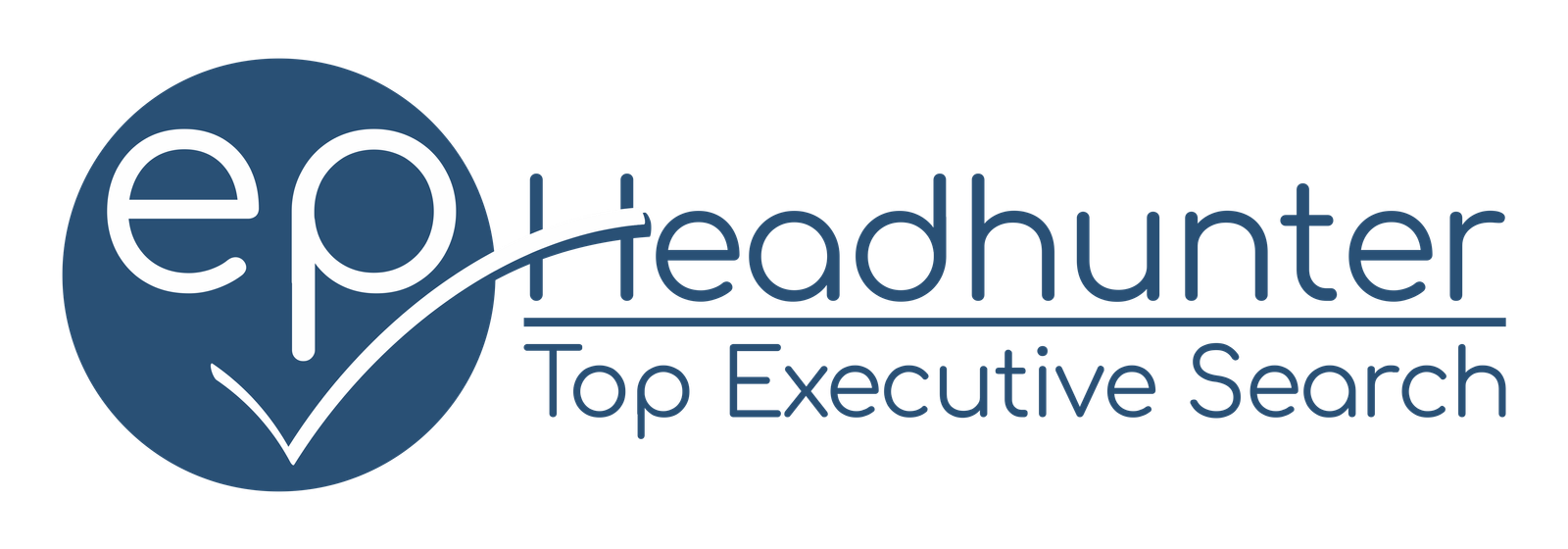In today’s competitive marketplace, finding the right leadership talent can feel like an uphill battle. Companies often struggle to identify candidates who not only meet skill requirements but also align with their culture and vision. This is where specialized recruitment strategies come into play.
Two primary models dominate the hiring landscape: one involves an upfront commitment, while the other operates on a success-based payment system. Each approach has its strengths, but choosing the right one depends on your organization’s unique needs and goals.
Specialized recruitment firms play a critical role in ensuring quality and efficiency. They help organizations navigate the complexities of hiring, whether it’s for executive roles or niche positions. Understanding the differences between these models can make all the difference in securing the right candidate.
As we explore these strategies, we’ll provide insights to help you decide which approach aligns best with your hiring objectives. Let’s dive in and uncover the key factors that can transform your recruitment process.
Key Takeaways
- Hiring top leadership talent requires a strategic approach.
- Specialized recruitment ensures quality and efficiency.
- Different models cater to unique organizational needs.
- Understanding these strategies can improve hiring outcomes.
- Expert insights help align recruitment with business goals.
Our Approach to Executive Hiring in Colombia
Navigating the complexities of executive hiring in Colombia requires a deep understanding of local dynamics. The country’s unique business environment, cultural nuances, and economic factors all play a role in shaping recruitment strategies. Our approach is designed to address these challenges while delivering tailored solutions that meet our clients’ specific needs.

Understanding Our Local Market
Colombia’s executive hiring landscape is shaped by its diverse industries, regional differences, and competitive talent pool. We take the time to analyze these factors, ensuring our strategies align with the market’s demands. This localized insight allows us to identify top-tier candidates who not only meet skill requirements but also thrive in Colombia’s unique business culture.
Our team collaborates closely with companies to understand their goals and challenges. Whether it’s a multinational corporation or a local startup, we tailor our approach to fit their vision. This ensures that every recruitment effort is aligned with the client’s long-term objectives.
Tailoring Strategies to Client Needs
Every company has unique hiring needs, and we pride ourselves on delivering customized solutions. From evaluating budget considerations to selecting the right fee model, we ensure our strategies are both effective and cost-efficient. Our goal is to provide value at every stage of the recruitment process.
We also focus on building strong relationships with both clients and candidates. By understanding the specific challenges companies face, we can offer targeted recommendations that lead to successful placements. This personalized approach not only benefits the client but also enhances the experience for potential job candidates.
- Localized Insights: We leverage our knowledge of Colombia’s market to identify the best talent.
- Customized Solutions: Our strategies are tailored to meet each client’s unique needs.
- Client-Centric Approach: We prioritize collaboration and transparency throughout the process.
By combining market expertise with a client-focused methodology, we ensure that every executive hiring process is seamless and successful. Our commitment to excellence sets us apart as a trusted partner in Colombia’s recruitment landscape.
Understanding Retained and Contingency Search Models
When it comes to hiring top-tier talent, understanding the right recruitment model is crucial. Two primary approaches dominate the hiring landscape, each tailored to different needs and goals. By exploring these models, we can help you identify the best fit for your organization.

What is Retained Search?
Retained search is a specialized approach designed for high-level roles. It involves an exclusive partnership between the hiring firm and the recruitment agency. This model focuses on targeting passive candidates who may not actively seek new opportunities but are ideal for the position.
The process begins with an upfront retainer fee, ensuring dedicated resources and a thorough vetting process. This method is particularly effective for executive search, where cultural alignment and long-term fit are critical. It’s a strategic choice for organizations prioritizing quality over speed.
What is Contingency Search?
Contingency search, on the other hand, operates on a success-based payment model. Recruitment agencies are compensated only when a candidate is successfully placed. This approach is often used for mid-level roles or positions requiring quick turnaround times.
It’s a transactional process, ideal for organizations with immediate hiring needs or limited budgets. While it provides access to a broader candidate pool, it may lack the depth and cultural alignment offered by retained search. This model is well-suited for volume-based hiring scenarios.
- Exclusive Focus: Retained search targets passive candidates through a dedicated process.
- Transactional Nature: Contingency search emphasizes speed and volume, with payment upon successful placement.
- Scope and Scale: Retained search is ideal for executive roles, while contingency search caters to mid-level positions.
- Process Differences: Retained search involves in-depth vetting, while contingency search prioritizes quick placements.
- Functional Variations: Each model is structured differently to meet specific hiring needs.
By understanding these models, we can help you align your recruitment strategy with your organizational goals. Whether you prioritize quality or speed, the right approach can transform your hiring process.
Retained vs. Contingency Search: A Comprehensive Comparison
Selecting the optimal recruitment approach is essential for securing top-tier talent. The choice between the two primary models can significantly influence the quality and efficiency of your hiring process. Understanding their core differences ensures you align your strategy with your organizational goals.

Core Differences in Process and Delivery
The first model focuses on exclusivity and thorough vetting, ensuring a high-quality candidate pool. This approach is ideal for executive roles where cultural fit and long-term alignment are critical. It involves an upfront commitment, providing dedicated resources to identify passive candidates who may not actively seek new opportunities.
In contrast, the second model operates on a success-based payment system. It emphasizes speed and volume, making it suitable for mid-level positions or immediate hiring needs. While it offers access to a broader candidate pool, it may lack the depth of vetting required for executive roles.
Here’s a breakdown of the key distinctions:
- Exclusivity: The first model ensures dedicated focus, while the second involves multiple recruiters working on the same role.
- Candidate Quality: The first model prioritizes passive candidates, enhancing the overall quality of hires. The second often targets active job seekers, which may limit alignment.
- Strategic Focus: The first model is tailored for executive and senior roles, while the second caters to mid-level positions.
By understanding these differences, you can choose the model that best meets your hiring needs. Whether you prioritize quality or speed, the right approach ensures you attract the best talent for your organization.
Benefits of a Retained Search Model
Securing top-tier executive talent demands a strategic and exclusive approach. A dedicated partnership ensures precision, quality, and alignment with your organization’s goals. This model focuses on delivering tailored solutions that meet the unique needs of leadership roles.

Dedicated Partner Approach
One of the standout advantages of this model is the dedicated team that works exclusively on your hiring needs. Unlike transactional methods, this approach ensures full attention and commitment. The resource allocation is focused, enabling a deeper understanding of your company’s culture and requirements.
As one industry expert noted,
«Exclusive partnerships in recruitment foster trust and deliver results that align with long-term business objectives.»
This level of collaboration minimizes risk and ensures that every candidate is thoroughly vetted.
In-Depth Candidate Vetting
The vetting process in this model is rigorous and comprehensive. It goes beyond surface-level assessments to evaluate cultural fit, leadership potential, and strategic alignment. This ensures that only the most suitable candidates are presented, reducing the cost of mis-hires and enhancing the quality of your leadership team.
Key steps in the process include:
- Market mapping to identify passive candidates.
- Competency-based interviews to assess skills and experience.
- Reference checks to validate professional achievements.
This thorough approach highlights the difference between this model and alternative methods. It’s not just about filling a role; it’s about finding the right leader who can drive your organization forward.
Advantages of a Contingency Search Model
When it comes to recruitment, flexibility and efficiency are key factors for success. The contingency search model offers a unique blend of these qualities, making it a popular choice for many organizations. This approach is designed to meet immediate hiring needs while minimizing financial risks.
Cost Efficiency and Risk Control
One of the standout benefits of this model is its cost-efficient nature. Unlike other recruitment methods, fees are only paid upon successful placement. This pay-for-success mechanism ensures that companies invest resources wisely, reducing the financial burden of upfront costs.
Additionally, the lack of upfront fees lowers the risk for organizations. This is particularly advantageous for small to medium-sized businesses with limited budgets. By aligning payment with results, this model provides a practical solution for companies looking to manage their hiring expenses effectively.
Speed in Candidate Sourcing
Another significant advantage is the speed of candidate sourcing. Contingency search firms often have access to a broad network of active job seekers, enabling them to fill roles quickly. This is ideal for organizations with urgent hiring needs or those operating in fast-paced industries.
However, it’s important to note that this speed can sometimes come at a con. Multiple recruiters may work on the same role, potentially leading to duplicated efforts and less unique candidate pools. Despite this, the overall benefit of rapid placements often outweighs this drawback.
Here’s a quick comparison of key features:
- Cost Efficiency: No upfront fees, payment upon successful placement.
- Speed: Quick access to active candidates for urgent roles.
- Flexibility: Ideal for organizations with immediate hiring needs.
- Potential Drawback: Competing recruiter efforts may affect candidate uniqueness.
In summary, the contingency search model offers a flexible and efficient service for organizations prioritizing speed and cost control. While it may have some limitations, its ability to deliver results in a short time frame makes it a valuable option for many hiring scenarios.
Navigating Cost Structures and Fee Models
Understanding the financial aspects of recruitment models is critical for making informed hiring decisions. Each approach comes with its own fee structure, which can significantly impact your budget and return on investment. By breaking down these costs, we help you choose the model that aligns with your financial goals and hiring needs.
Fee Breakdown for Each Model
One model involves an upfront retainer fee, typically ranging from 25-30% of the candidate’s annual salary. This ensures dedicated resources and a thorough vetting process. For example, hiring a CEO with a $300,000 salary could cost between $75,000 and $90,000. This model is a pro for organizations prioritizing quality over speed.
In contrast, the second model operates on a success-based payment system, with fees ranging from 20-25% of the candidate’s salary. This means you only pay when a qualified candidate is successfully placed. It’s a pro con approach, offering flexibility but potentially less depth in candidate vetting.
Budget and Return on Investment
Budget considerations play a crucial role in selecting the right model. The upfront investment in the first model may seem high, but it often leads to better long-term outcomes. As one expert noted,
«Investing in a thorough recruitment process ensures a higher return on investment by reducing the risk of mis-hires.»
The second model, while cost-efficient, may require additional resources to ensure candidate quality. Both models offer guarantee clauses, providing added reassurance. For instance, the first model may refund fees if the candidate leaves within a specified period, while the second often guarantees a 90-day retention period.
Here’s a quick comparison of key features:
- Upfront Fees: The first model requires an initial investment, while the second operates on a pay-for-success basis.
- Candidate Quality: The first model focuses on passive candidates, ensuring a better fit. The second may involve active job seekers, requiring additional vetting.
- Financial Risk: The first model involves higher upfront costs but lower long-term risk. The second minimizes immediate expenses but may require additional oversight.
By understanding these fee structures, you can make a more informed decision. Whether you prioritize quality or cost efficiency, we ensure transparency and a predictable return on investment.
Evaluating Timelines and Quality Metrics
Understanding the timelines and quality metrics of recruitment models is essential for making informed hiring decisions. Each approach offers distinct advantages, and knowing what to expect helps align your strategy with organizational goals. We break down the projected timeframes and key quality benchmarks to help you set realistic expectations.
Projected Timeframes for Each Approach
Retained search typically takes between 90 to 180 days, depending on the complexity of the role. This model focuses on thorough vetting and cultural alignment, ensuring a high-quality candidate pool. Weekly progress updates are a standard part of the process, keeping clients informed at every stage.
Contingency search, on the other hand, often delivers candidates faster, sometimes within weeks. This speed is ideal for urgent hiring needs but may come with trade-offs in candidate quality. Both models have their place, and the choice depends on your priorities.
Measuring Quality Metrics
Quality metrics are critical for evaluating the success of a recruitment process. These include candidate retention rates, performance evaluations, and cultural fit assessments. A retained search firm excels in these areas, providing detailed reports that highlight candidate suitability.
As one industry expert noted,
«Quality metrics ensure that the hiring process delivers long-term value, not just immediate results.»
Role of a Retained Search Firm
A retained search firm plays a pivotal role in maintaining consistent progress updates. They track milestones on a basis that ensures accountability and transparency. This structured approach helps clients stay informed and confident throughout the process.
Comparing Milestones and Benchmarks
Here’s a quick comparison of key milestones and quality benchmarks:
- Timeframes: Retained search takes longer but ensures quality, while contingency search prioritizes speed.
- Quality Metrics: Retained search focuses on retention and cultural fit, while contingency search may require additional vetting.
- Progress Updates: Retained search provides weekly updates, ensuring transparency. Contingency search may offer less frequent communication.
By understanding these timelines and metrics, you can choose the approach that best meets your hiring needs. Whether you prioritize quality or speed, we ensure a process that delivers results.
Exploring Hybrid Recruitment Models
Hybrid recruitment models offer a middle ground for companies with diverse hiring needs. By blending the strengths of different approaches, these models provide a balanced solution that addresses both speed and quality. This flexibility makes them an attractive option for organizations seeking tailored hiring strategies.
Combining Best Practices from Both Worlds
The hybrid approach integrates the thoroughness of a retained executive search with the efficiency of a contingency model. This ensures a comprehensive vetting process while maintaining the ability to fill roles quickly. By leveraging a proven search model, companies can achieve better outcomes without compromising on candidate quality.
As one expert noted,
«Hybrid models strike the perfect balance between strategic depth and operational speed, making them ideal for modern hiring needs.»
Risk Sharing and Flexibility
One of the key advantages of hybrid models is their risk-sharing structure. Clients pay a reduced retainer fee upfront, with the remainder contingent on successful placement. This aligns the interests of both the client and the executive search firm, ensuring a collaborative effort to find the best candidate.
This flexible fee structure minimizes financial risk while maintaining a high level of service. It’s particularly beneficial for companies with specific budget constraints or those looking to optimize their recruitment investments.
Here’s how hybrid models stand out:
- Balanced Approach: Combines the depth of retained search with the speed of contingency models.
- Risk Sharing: Reduces upfront costs while ensuring quality placements.
- Customizable Solutions: Tailored to meet the unique needs of each client.
By adopting a hybrid recruitment model, organizations can achieve the best of both worlds. Whether you prioritize quality, speed, or cost efficiency, this approach ensures a seamless and effective hiring process.
Aligning Search Strategies with Organizational Needs
Tailoring recruitment strategies to fit organizational needs is key to successful executive hiring. Every company has unique challenges, and a one-size-fits-all approach rarely delivers the best results. By customizing our methodologies, we ensure that every hiring process aligns with your goals and culture.
Customizing Our Approach for Executive Roles
Executive roles demand a specialized approach. We combine elements from both retained executive and contingency models to create a balanced strategy. This ensures thorough vetting while maintaining flexibility for urgent needs.
As one expert noted,
«A customized recruitment strategy not only improves hiring outcomes but also strengthens organizational alignment. » «Una estrategia de reclutamiento personalizada no solo mejora los resultados de contratación, sino que también fortalece la alineación organizacional. Al integrar estrategias para la diversidad en contrataciones, las empresas pueden atraer talento de diferentes orígenes y perspectivas, enriqueciendo así su cultura y fomentando la innovación. Además, este enfoque permite crear equipos más inclusivos y representativos, lo que a su vez contribuye a un mejor desempeño general de la organización.
Our process includes:
- Understanding your company’s culture and vision.
- Adapting methodologies to fit specific role requirements.
- Balancing speed and quality to meet your timeline.
By focusing on your unique needs, we deliver candidates who are not only skilled but also a perfect cultural fit. This approach minimizes risks and maximizes long-term success.
Whether you’re filling a critical leadership role or addressing an immediate hiring need, our tailored strategies ensure the best results. We’re committed to aligning our approach with your organizational goals, making every hiring process seamless and effective.
Enhancing Candidate Engagement and Recruitment Success
Building strong relationships with candidates is a cornerstone of successful recruitment. In Colombia’s competitive hiring landscape, proactive engagement ensures that top talent feels valued and understood. This approach not only improves candidate experience but also drives better recruitment outcomes.
Leveraging Industry Expertise in Colombia
Our deep understanding of Colombia’s industry dynamics allows us to connect with top-tier talent effectively. By staying attuned to local market trends, we identify candidates who align with your company’s culture and goals. This localized insight is a key factor in our recruitment success.
We also focus on building trust with candidates through transparent communication. This ensures that potential hires feel confident about their decision to join your organization. Our client-centric approach fosters long-term relationships that benefit both parties.
Innovative Engagement Practices
Our recruitment strategies incorporate innovative practices that enhance candidate engagement. For example, we use personalized outreach to connect with passive candidates who may not actively seek new opportunities. This method ensures a broader and more diverse talent pool.
We also prioritize regular updates and feedback throughout the hiring process. This keeps candidates informed and engaged, reducing the risk of drop-offs. As one expert noted,
«Proactive engagement leads to stronger candidate relationships and more efficient recruitment outcomes.»
Client Collaboration and Sustained Relationships
We work closely with each client to understand their unique needs and challenges. This collaboration allows us to tailor our strategies, ensuring that every recruitment effort aligns with your goals. Our focus on sustained relationships ensures that candidates remain engaged even after placement.
Here’s how we achieve this:
- Personalized Outreach: Tailored communication to connect with candidates on a deeper level.
- Regular Updates: Keeping candidates informed at every stage of the process.
- Feedback Loops: Providing constructive feedback to improve candidate experience.
Examples of Successful Strategies
Our innovative practices have led to higher candidate conversion rates and successful executive placements. For instance, a recent client in Colombia’s tech sector saw a 30% increase in candidate acceptance rates after implementing our engagement strategies. This success highlights the importance of a tailored approach in recruitment.
By combining local expertise with innovative practices, we ensure that every hiring process is seamless and effective. Our commitment to candidate engagement sets us apart as a trusted partner in Colombia’s recruitment landscape.
Wrapping Up Our Hiring Strategy Insights
Effective hiring strategies are essential for building a strong leadership team. Throughout this discussion, we’ve explored the key differences and benefits of two primary recruitment models. Each approach offers unique advantages, from thorough vetting to cost efficiency, ensuring organizations can align their hiring process with their specific needs.
We’ve also reviewed critical timelines, cost structures, and quality metrics to help you make informed decisions. Whether you prioritize speed or depth, understanding these factors ensures a successful search process. Our commitment as an employer partner is to deliver top-tier talent acquisition that drives long-term success.
If you’re ready to elevate your hiring strategy, we invite you to reach out for a personalized consultation. Together, we can navigate the complexities of executive hiring and find the right leader for your organization. Let’s work towards building a team that meets your goals and thrives at every level.
